

“To be early might be challenging, but to be too late will be devastating”
— Matthieu van der Elst, Chief Impact Officer, Cathay Capital
Sustainability
Investment approach – risk, returns and sustainability
Standardized processes and tools are used to measure, track, and continuously improve the economic, environmental, and social impact of portfolio companies.
Integrating sustainability into every step of the investment cycle
Acquisition phase
Exclusion list
Sustainability Screening
Performed by the investment team
Sustainability due diligence
For certain companies, either at acquisition or within 6 months of investment
Sustainability clause in shareholder agreement
When context allows
Holding period
Annual assessment through the ESG risk assessment, climate screening and impact scoring tools
Annual follow-up review for companies with high ESG risk
Annual reporting of sustainability KPIs
Annual executive-level review of aggregated portfolio sustainability positioning and KPIs
Resource hub available to share best practices
Exit
Sustainability performance highlighted
Metric-based performance track record used to highlight sustainability performance at exit or in future fundraising rounds
Ecosystem approach – supporting companies throughout their sustainability journey
Tech-enabled tools covering ESG, climate and impact, are used to provide tailored support for companies to embed responsible, sustainable business practices into operations.
Impact Resource Hub
The Cathay ESG & Impact Resource Hub is an online platform sharing informational content and best practices on a broad range of ESG topics including climate action, human resources, diversity and inclusion, data governance and ethics and more. The Resource Hub is a practical toolbox to help portfolio companies easily and rapidly implement new ESG policies and initiatives.


Sustainability reports
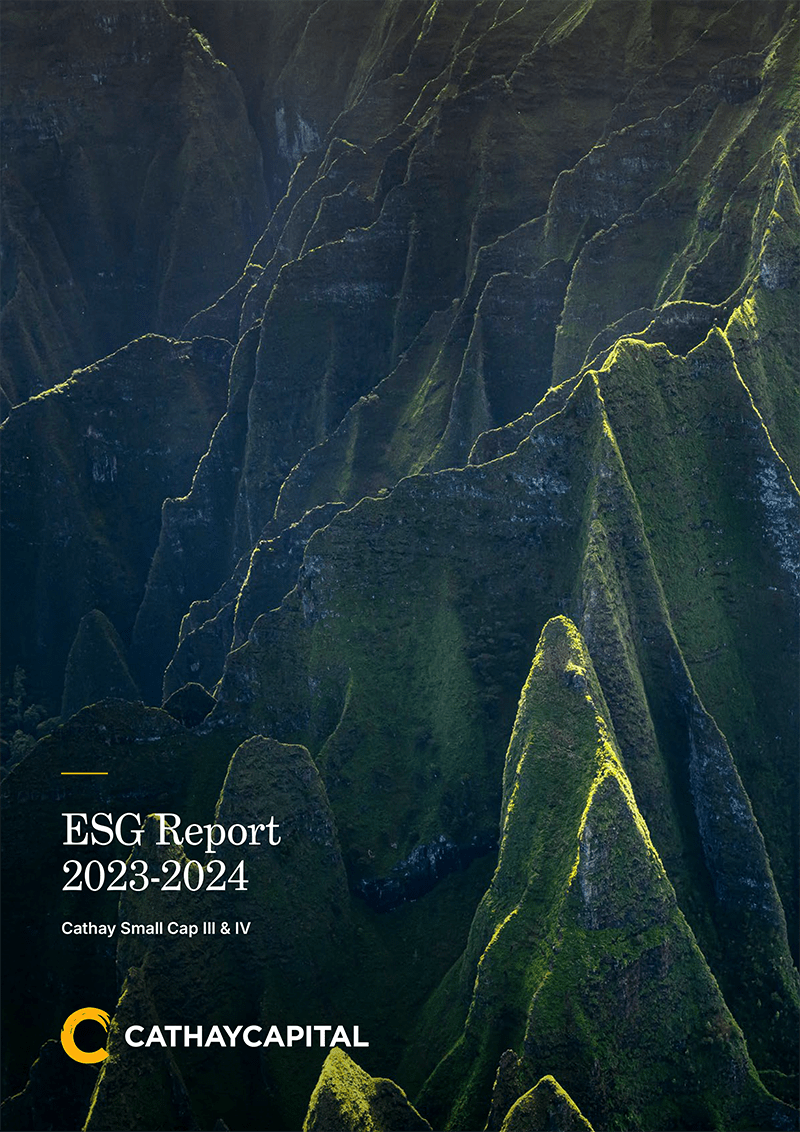
Cathay Capital Private Equity Small Cap III & IV
ESG Report 2023 - 2024
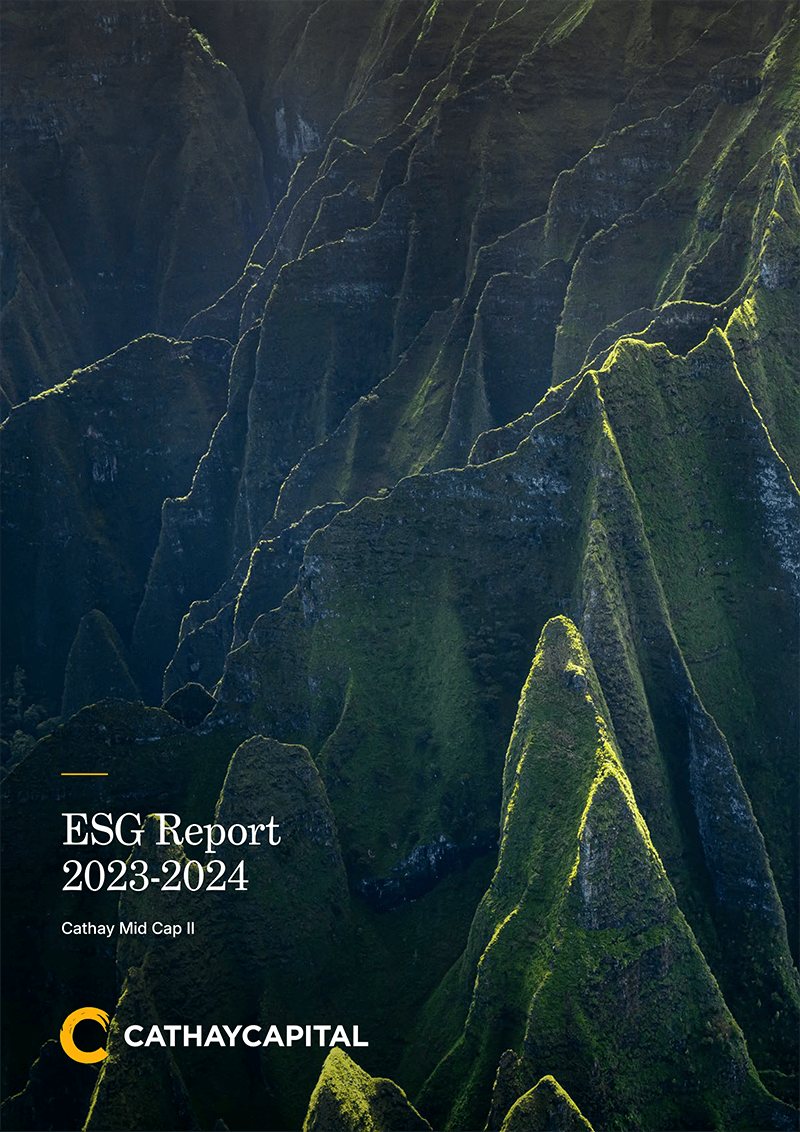
Cathay Capital Private Equity Mid Cap II
ESG Report 2023 - 2024
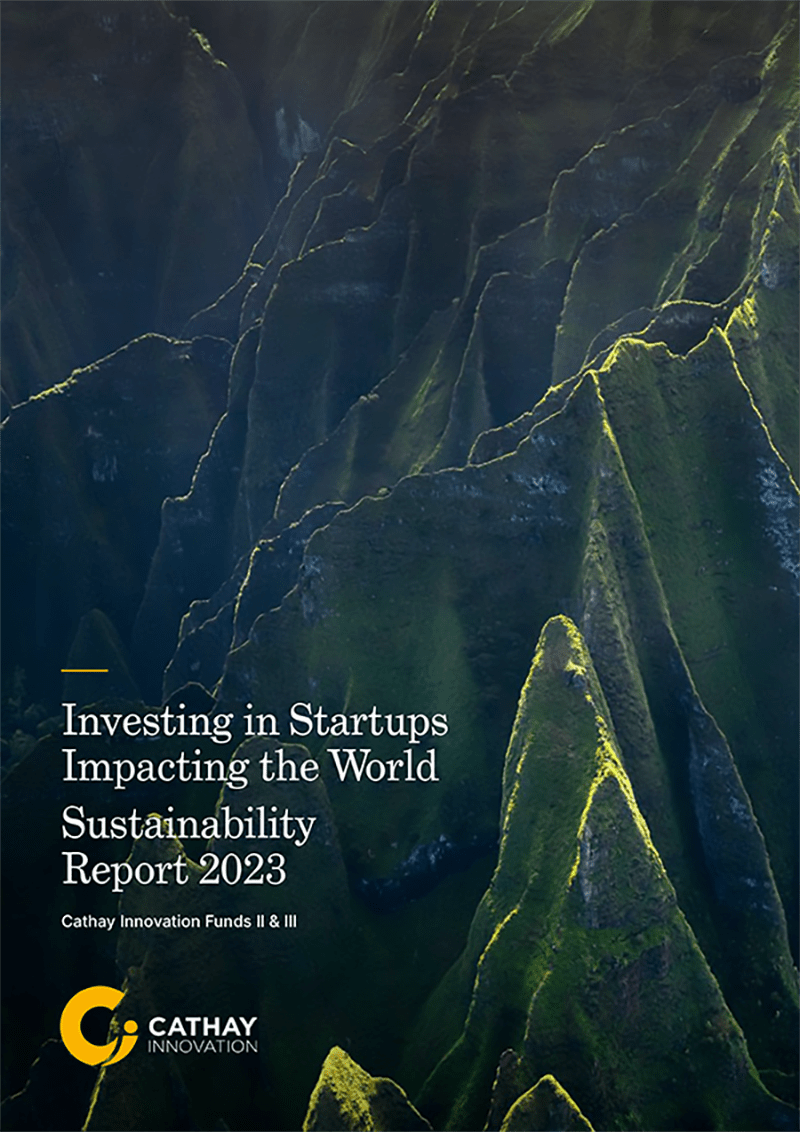
Cathay Innovation Fund II & III
Sustainability Report 2023 - 2024
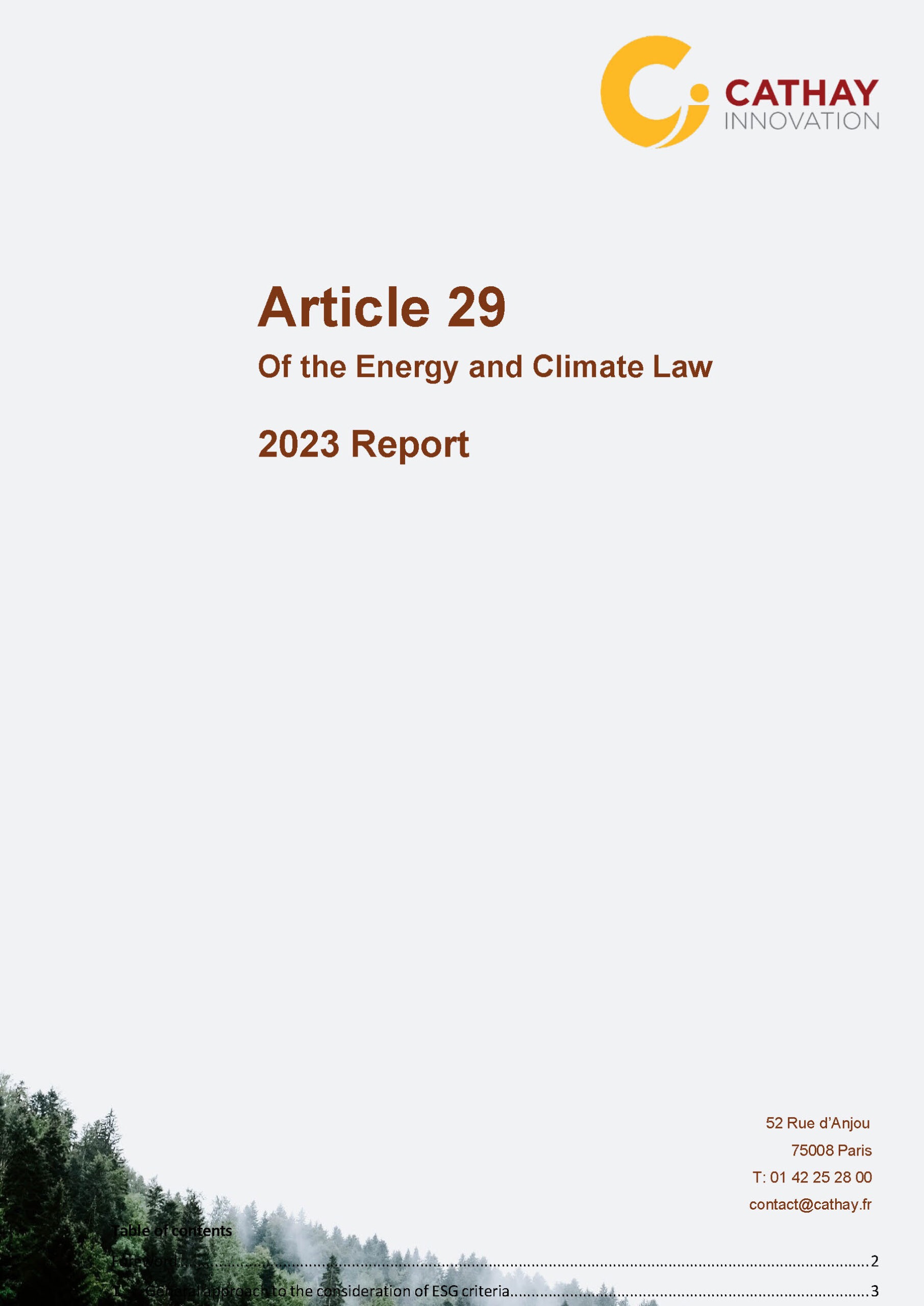
Article 29 of the Energy and Climate Law
2023 Report (Cathay Innovation)
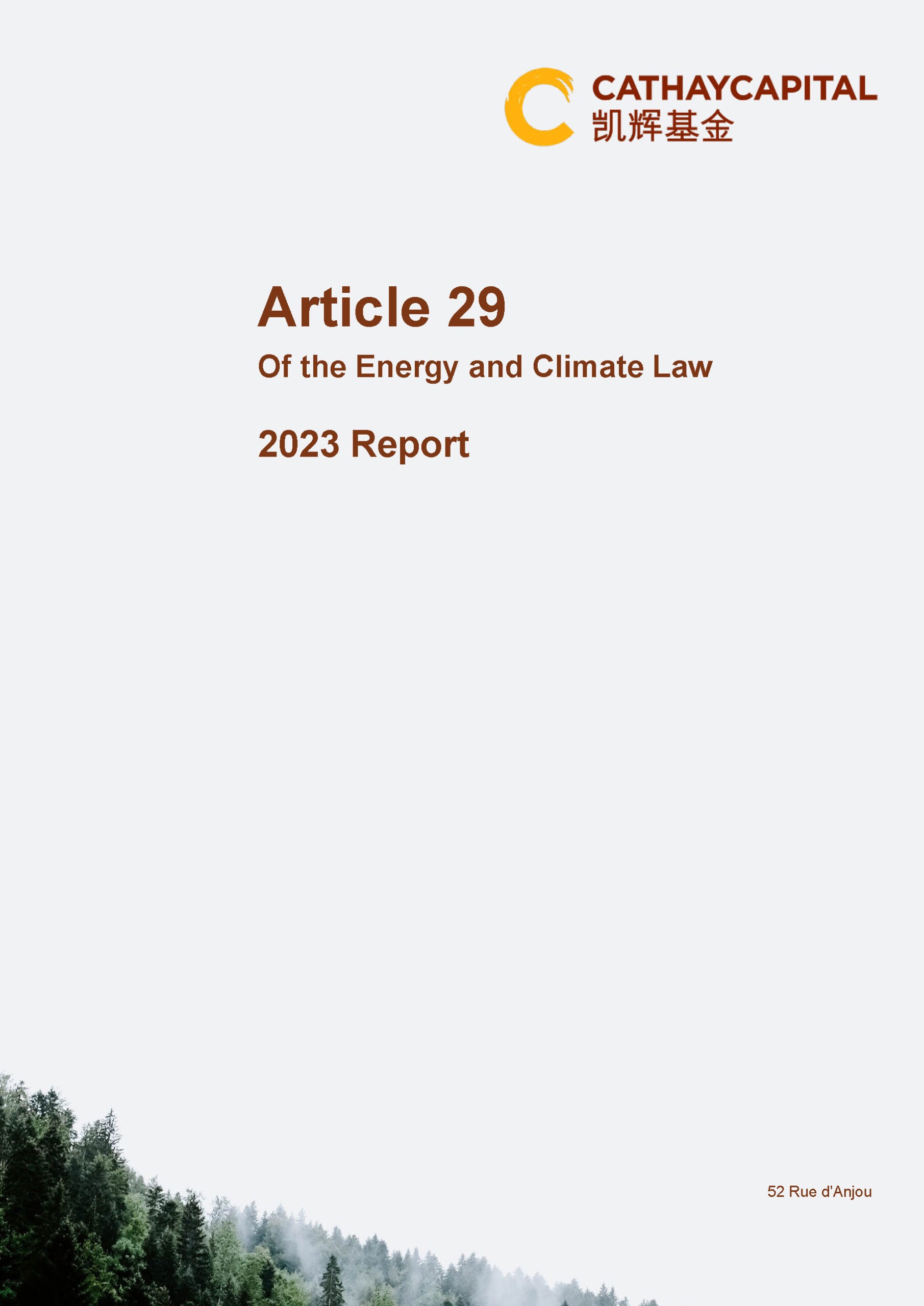
Article 29 of the Energy and Climate Law
2023 Report (Cathay Capital)
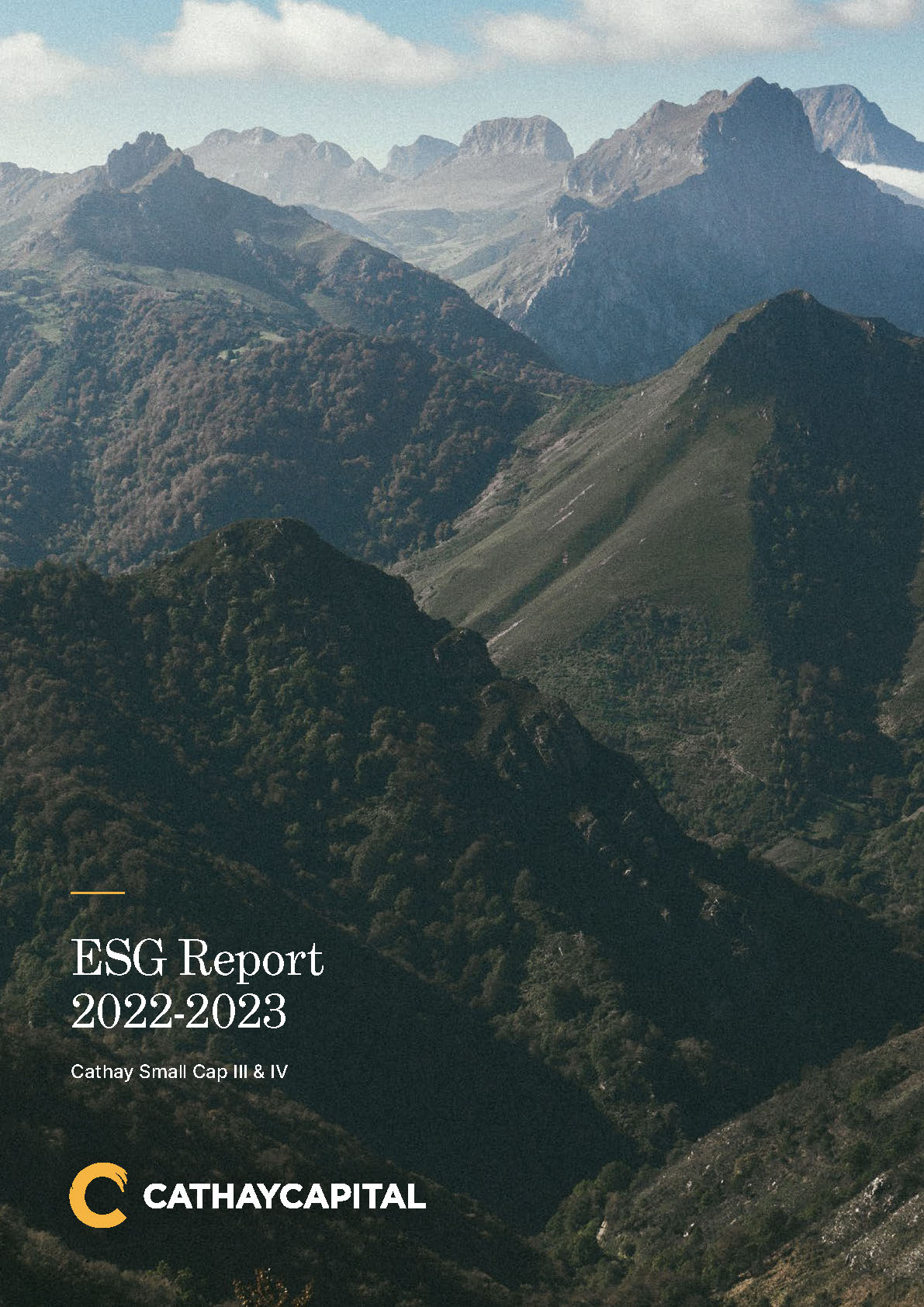
Cathay Capital Private Equity Small Cap III & IV
ESG Report 2022 - 2023
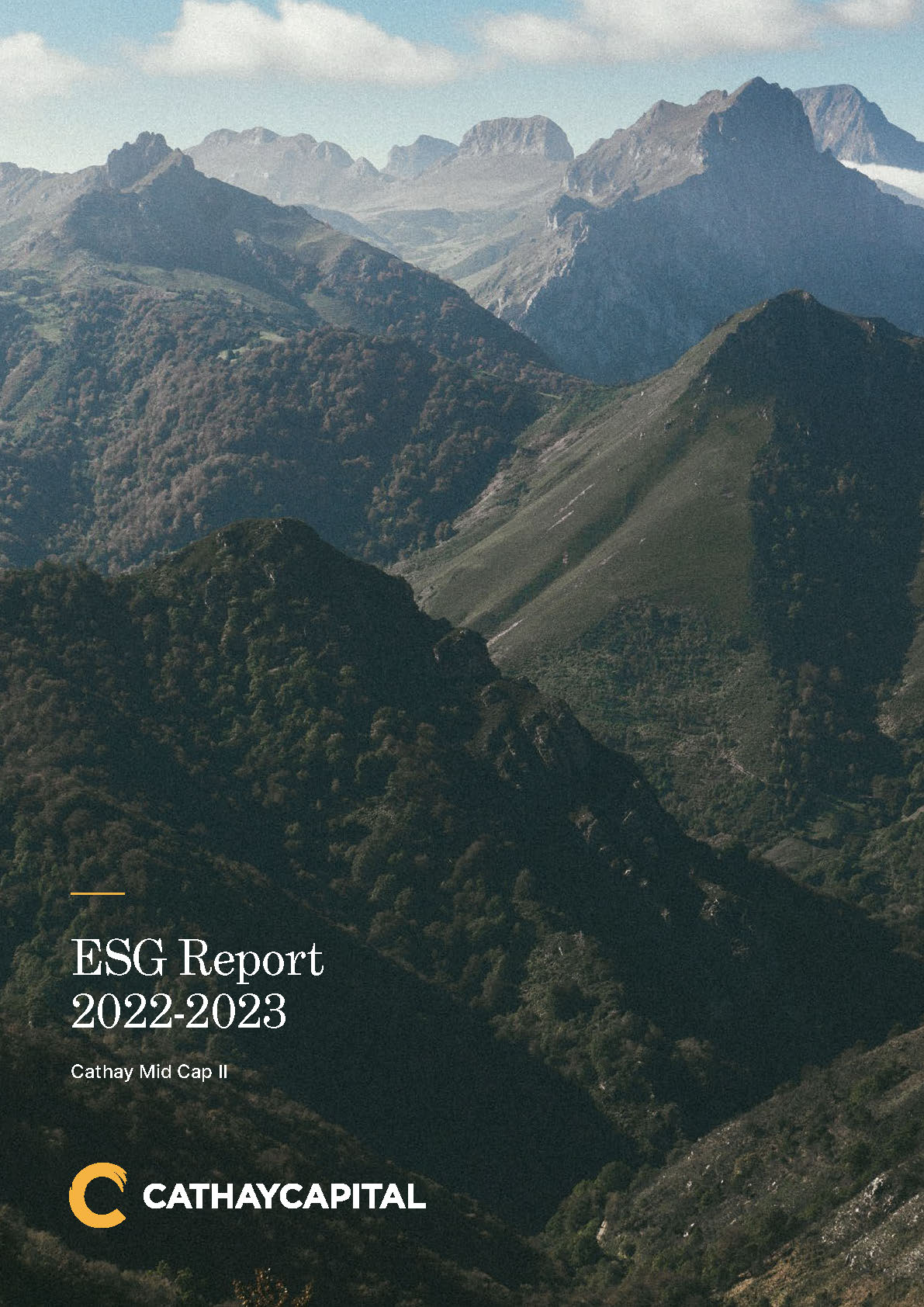
Cathay Capital Private Equity Mid Cap II
ESG Report 2022 - 2023
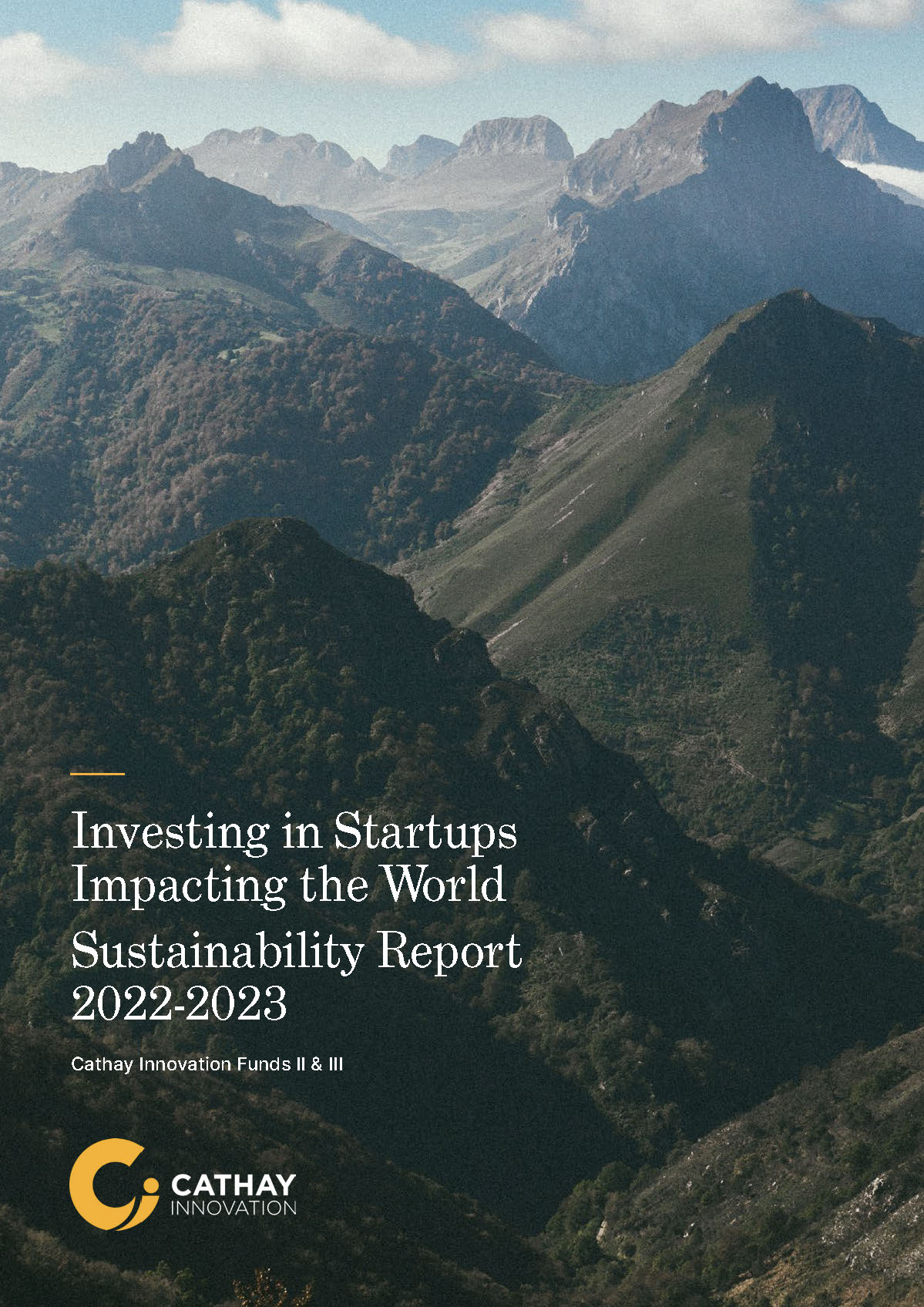
Cathay Innovation Fund II
Sustainability Report 2022 - 2023
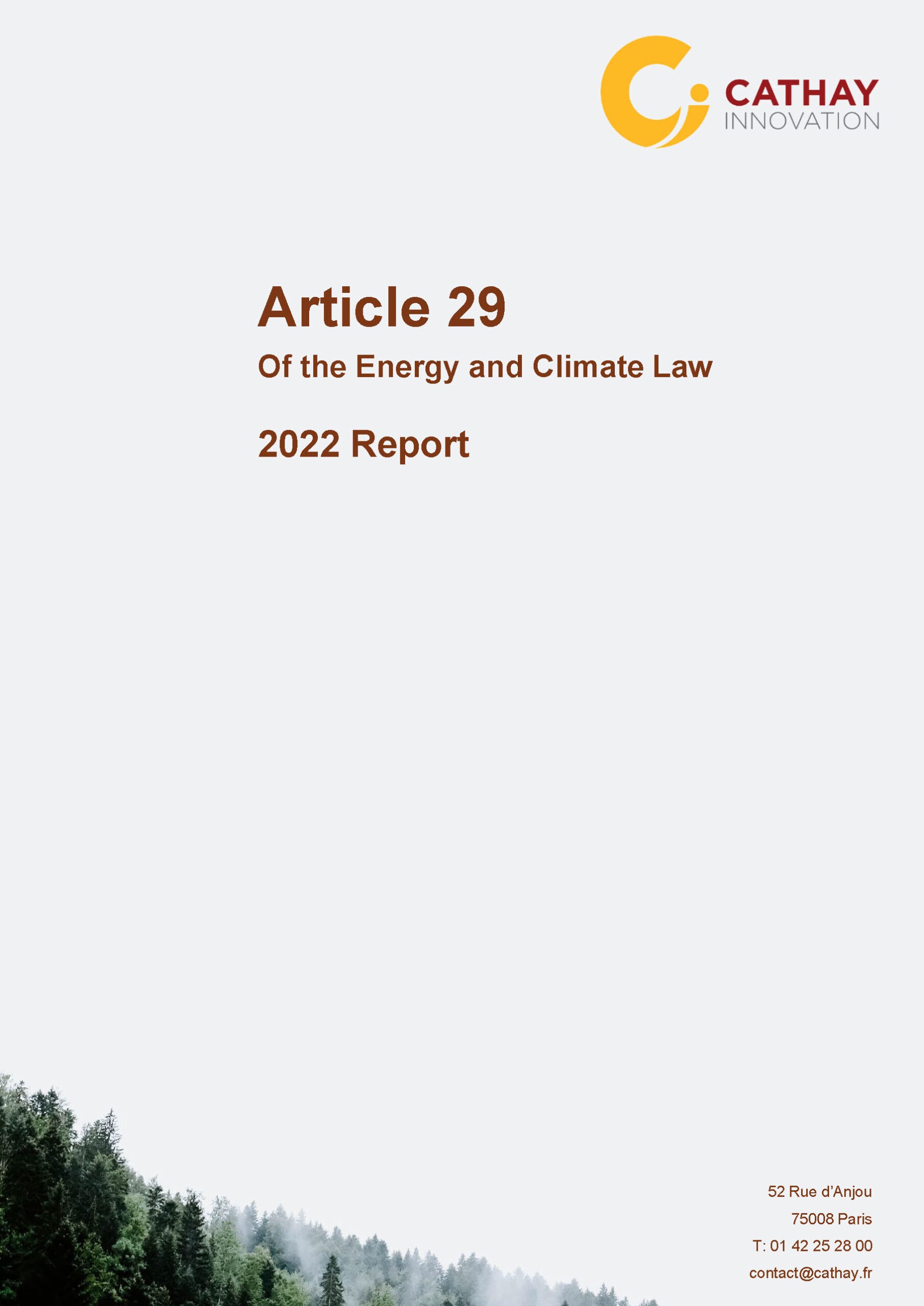
Article 29 of the Energy and Climate Law
2022 Report (Cathay Innovation)
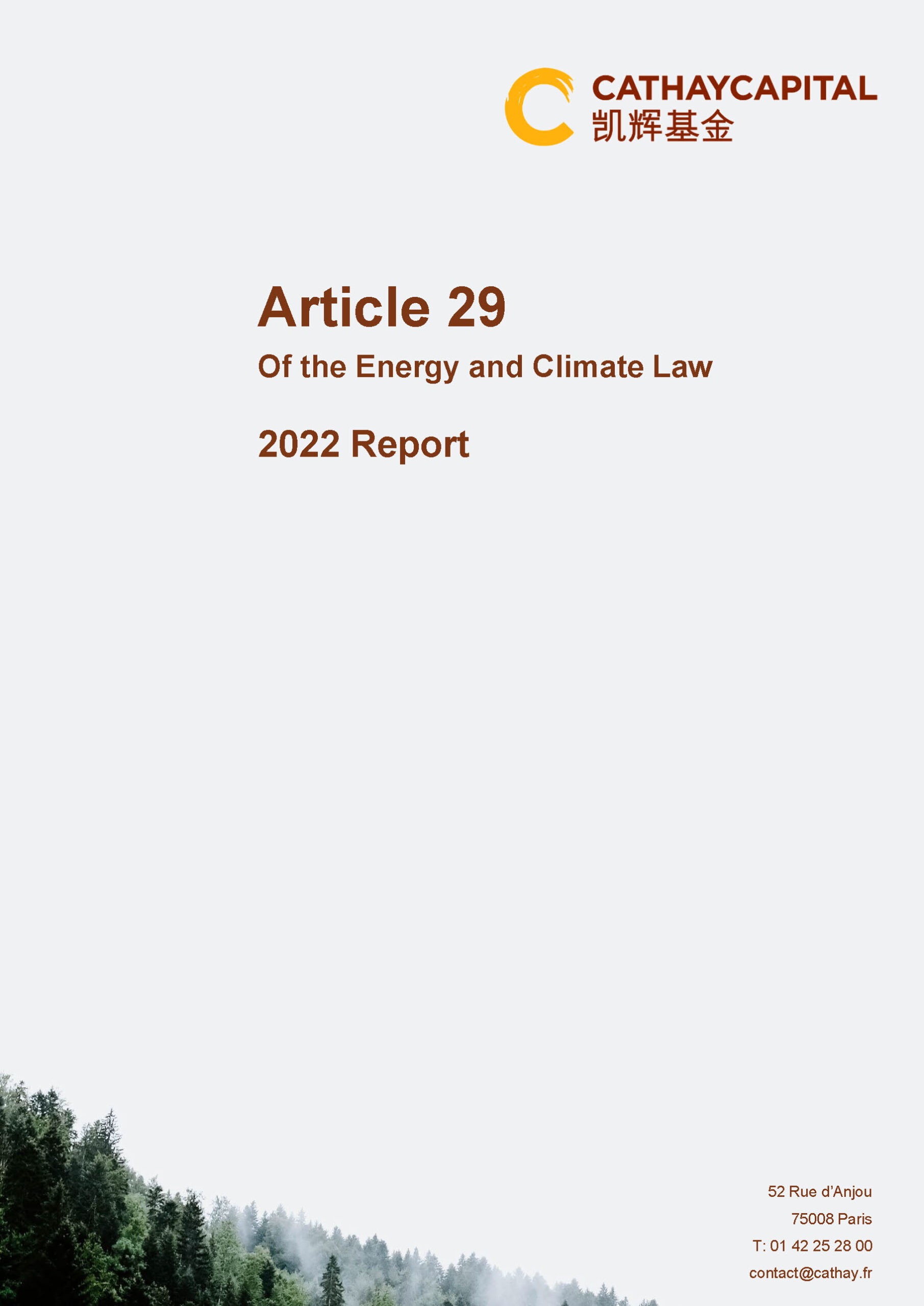
Article 29 of the Energy and Climate Law
2022 Report (Cathay Capital)
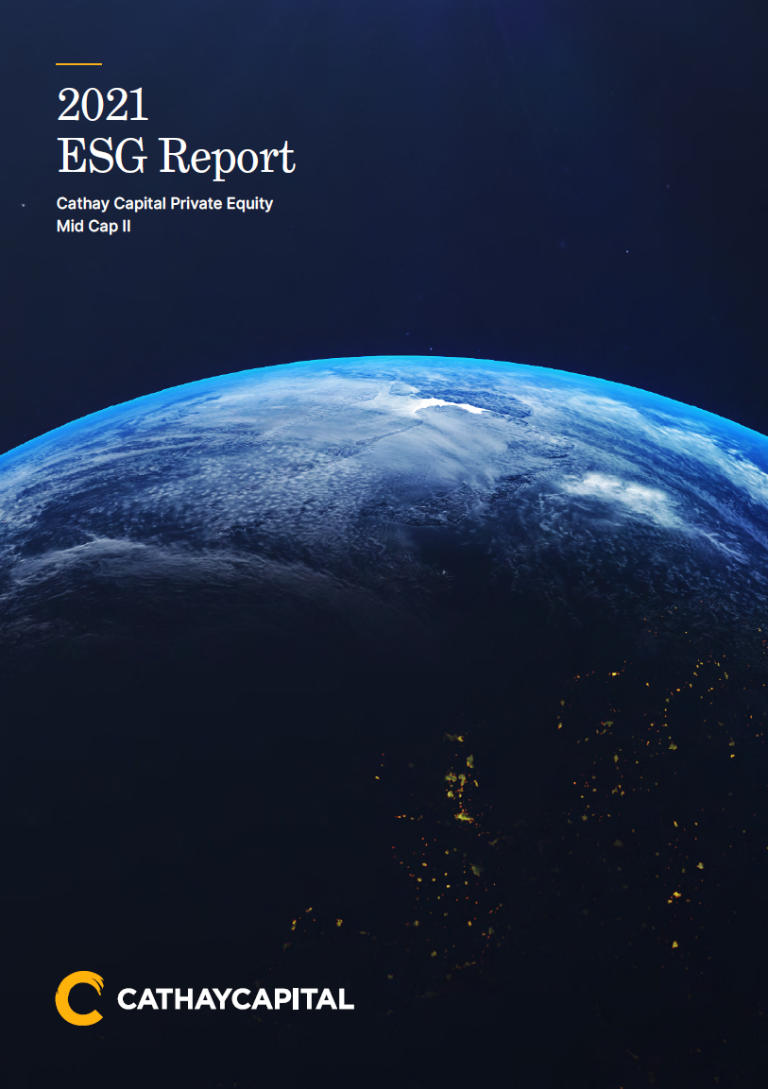
Cathay Capital Private Equity Midcap II
ESG Report 2021
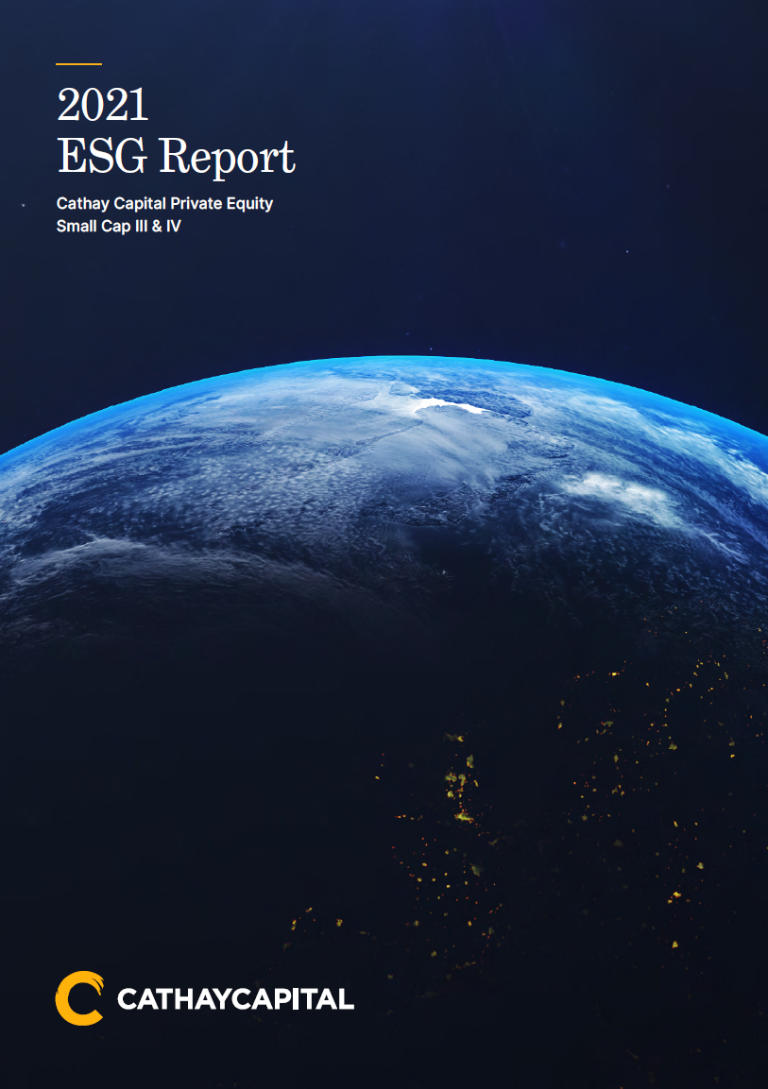
Cathay Capital Private Equity Smallcap III & IV
ESG Report 2021
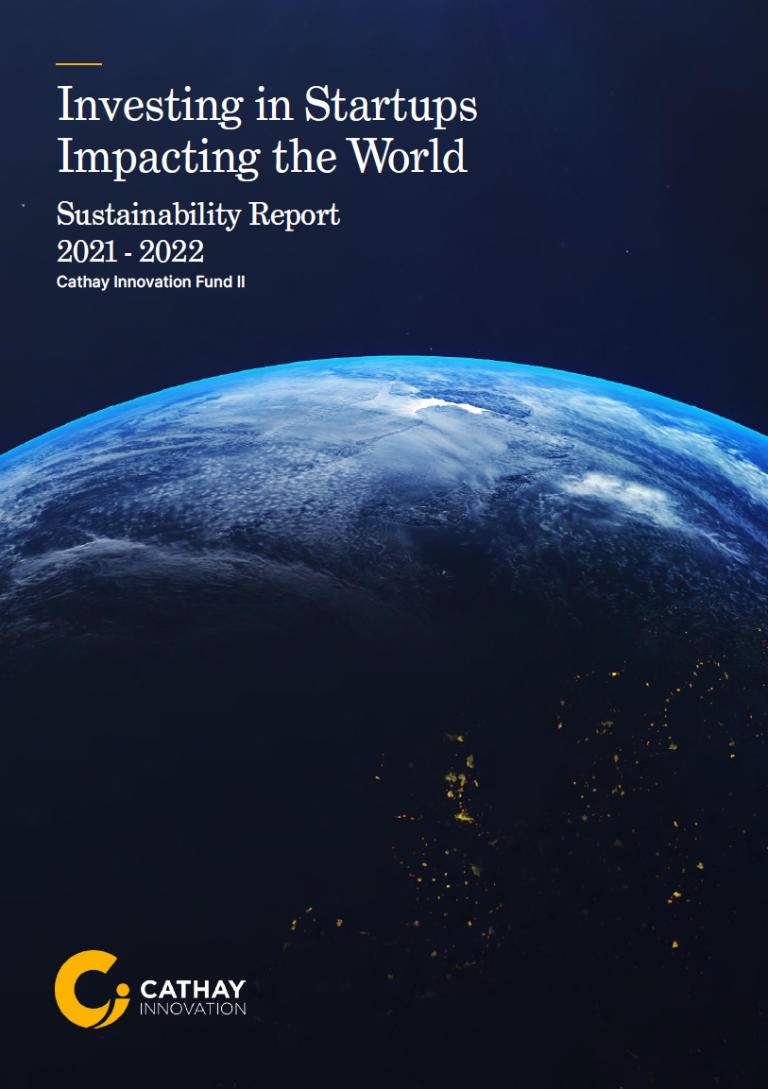
Cathay Innovation Fund II
Sustainability Report 2021 - 2022
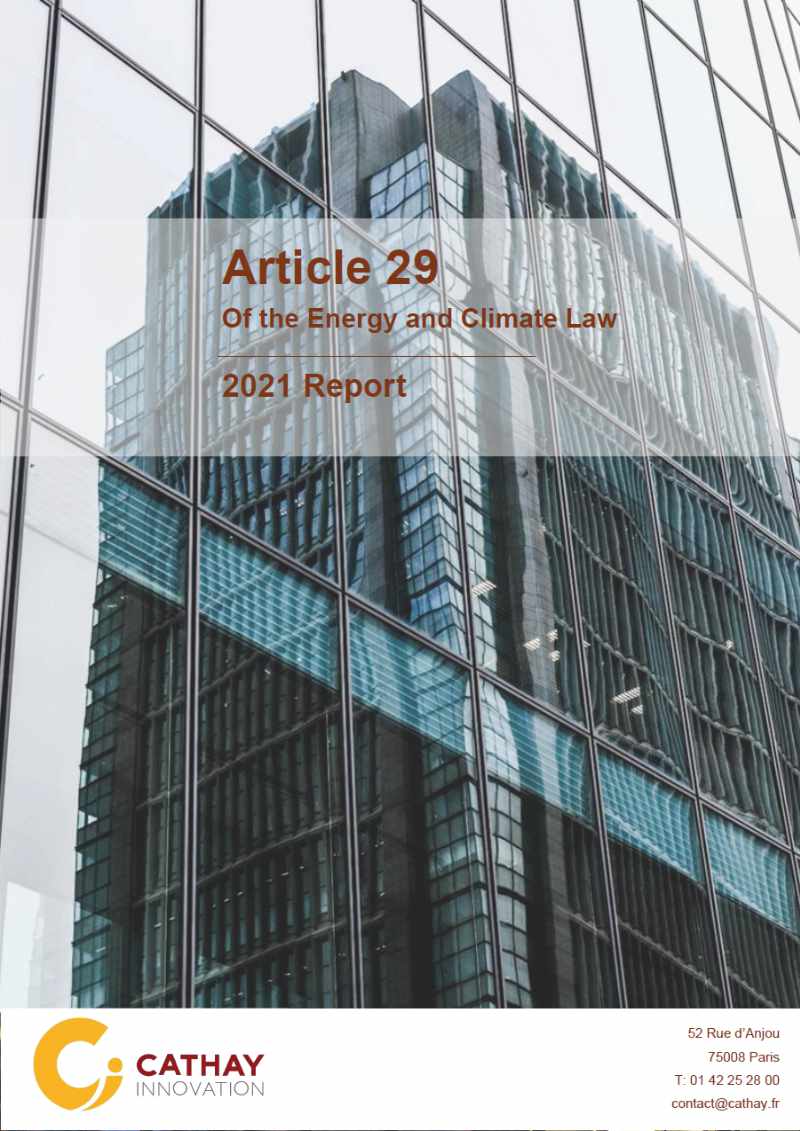
Article 29 of the Energy and Climate Law
2021 Report (Cathay Innovation)
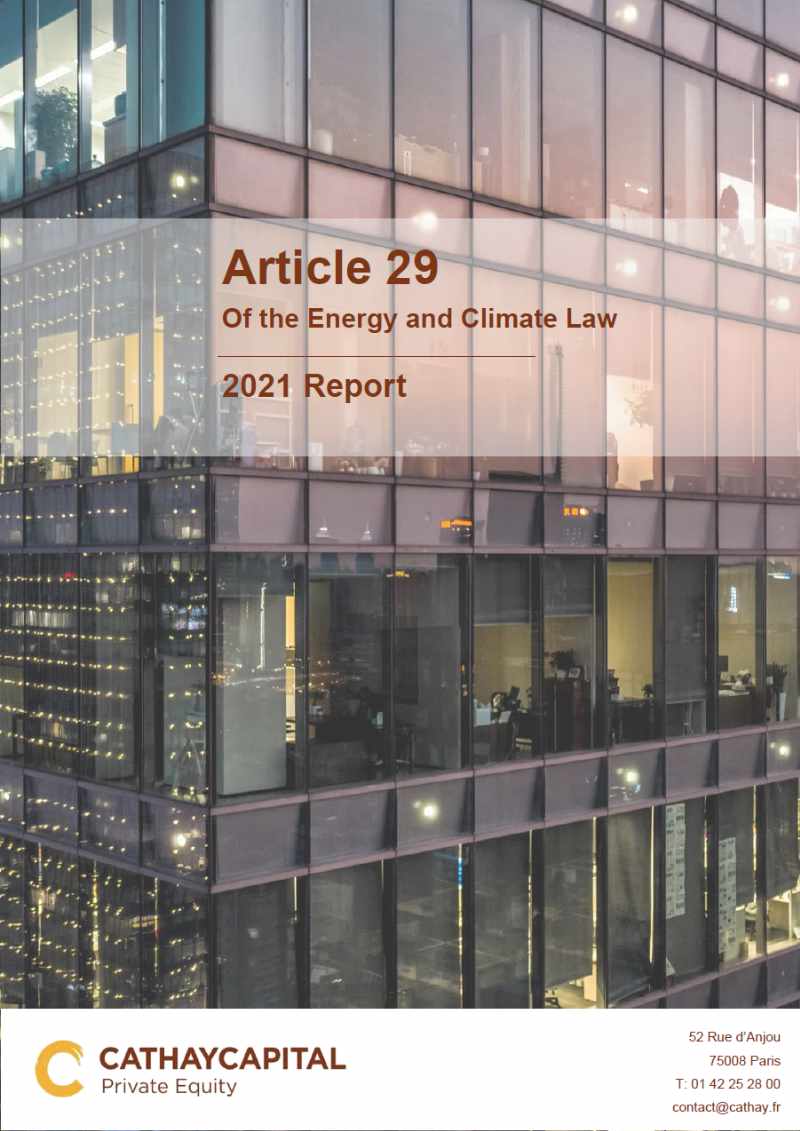
Article 29 of the Energy and Climate Law
2021 Report (Cathay Capital)
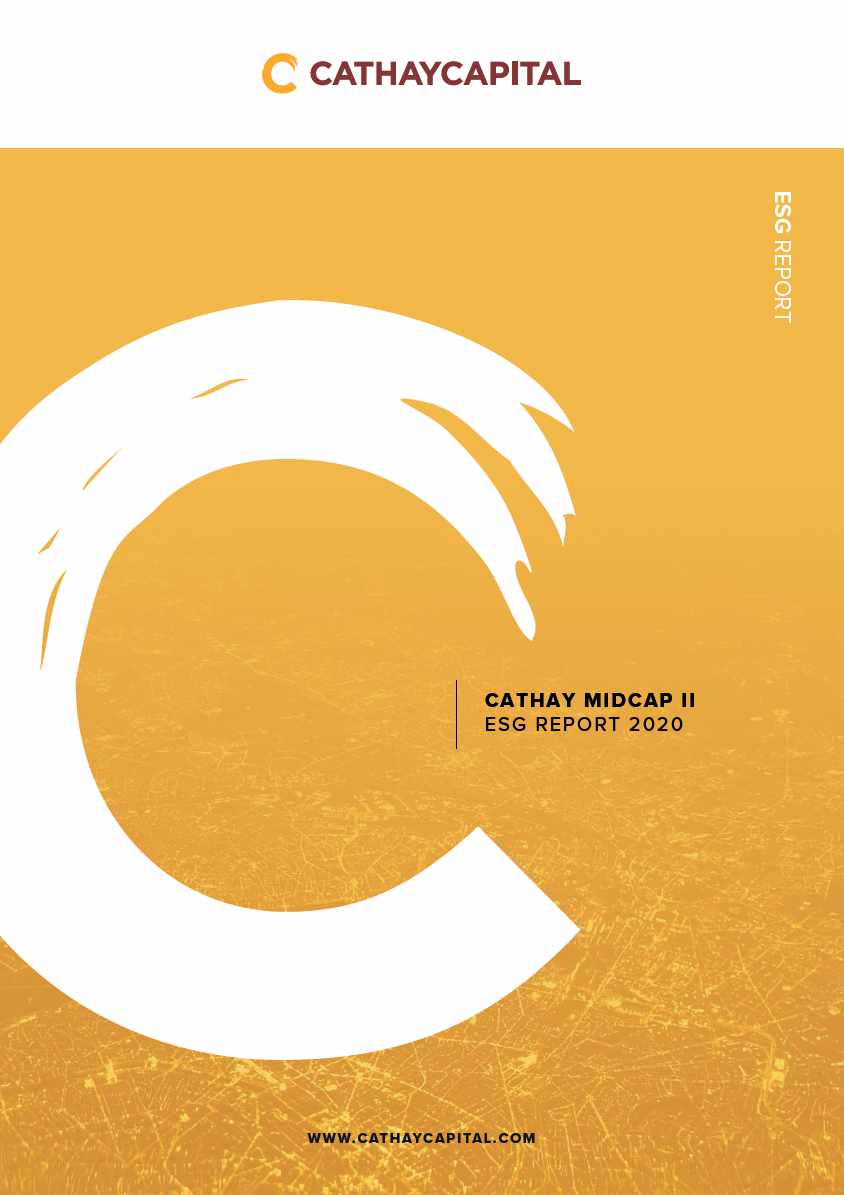
Cathay Midcap II
ESG Report 2020
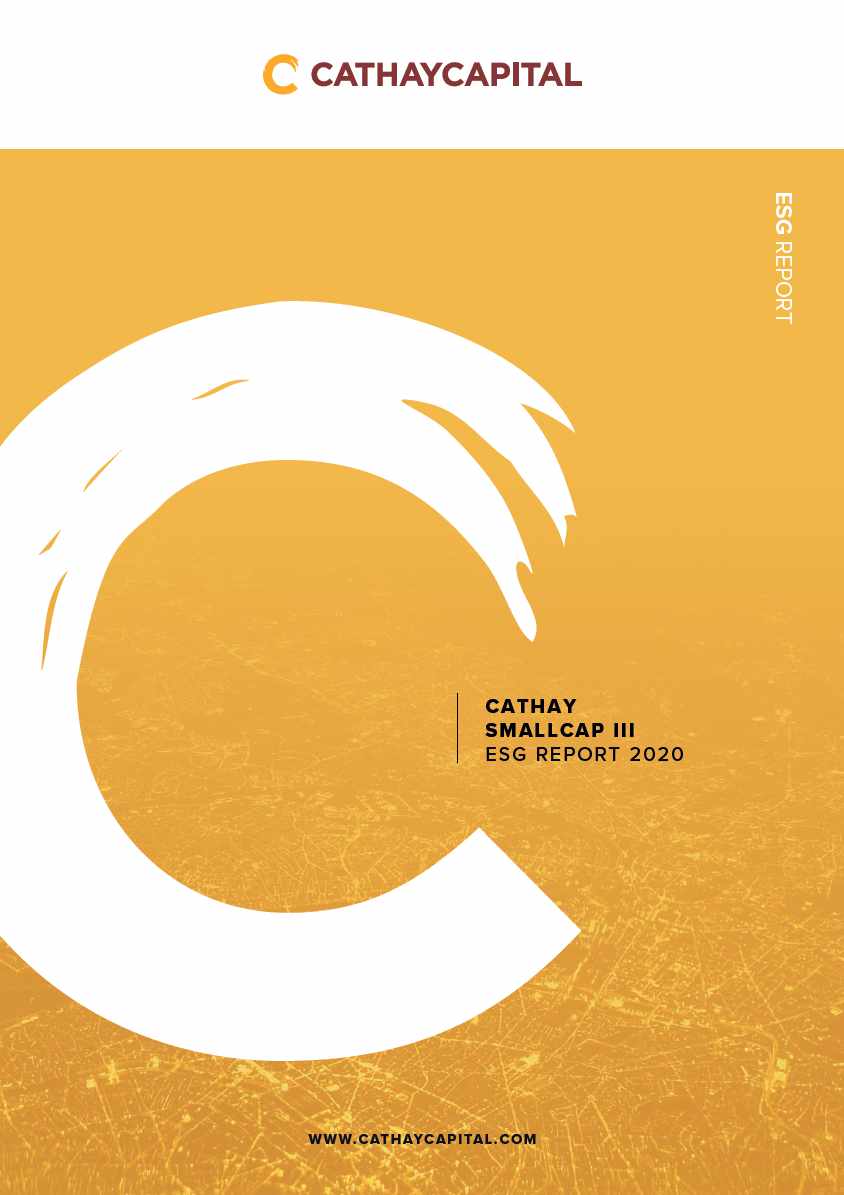
Cathay Smallcap III
ESG Report 2020
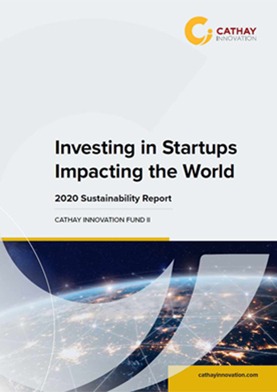
Cathay Innovation Fund II
Sustainability Report 2020


As a Firm, we are committed to considering adverse impacts on sustainability factors in [both] our entity [and product] level disclosures and have determined that sustainability risks are relevant to our financial products.
We therefore take the “comply” approach in relation to financial products and undertake to assess the likely impacts of sustainability risks on the returns of each financial product.
After careful consideration of the 14 Principal Adverse Indicators (PAI), this is where we stand.
Our ByLaws already cover 7 PAI’s as they stipulate that:
- We do not invest in any company with an exposure to the fossil fuel sector
- We do not invest in companies with hazardous waste
- We exclude any exposure to controversial weapons (anti-personnel mines, cluster munitions, chemical weapons, and biological weapons)
- We do not invest in high energy consumption intensity sectors with high impact on climate
- We do track the share of non-renewable energy consumption and production
- We do follow the OECD guideline violations
- We do follow the OECD guideline compliance monitoring system
Additionally, our ESG framework does also monitor the following 5 PAI indicators:
- Greenhouse Gas (GHG) emissions (*)
- Carbon footprint (*)
- GHG intensity of investee companies (*)
- Unadjusted gender pay gap
- Board gender diversity
(*) so far we’ve succeeded to track 92% of Private Equity companies and 56% of Venture Capital invested firms
The last 2 PAI indicators (‘activities negatively affecting biodiversity-sensitive areas’ and ‘emissions to water’) are not yet fully tracked separately, but are currently undertaken with the use of IBAT and ENCORE framework to validate with a mapping our non-exposure. This mapping should be available by 2025 and reported accordingly knowing that i) our investment thesis – mainly digital and enterprise services – is avoiding biodiversity-sensitive areas or emissions to water ii) none of our due diligence conducted for each and every investment has detected such negative impact so far.
We aim at reporting a full PAI reporting by 2025 once the metrics on these last two indicators would be available.